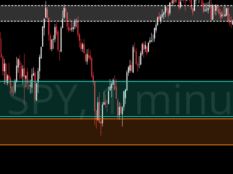Spread Trading
I’m Meta Matt, Director of Education and welcome to PB University LITE! This is a 50 Class Trading 101 Series geared towards both new and veteran traders alike! We go over everything from Trading Psychology, Technical Analysis, and Options Trading to Commodity Trading, Forex, and more!! This 50 Class series is not designed be taken in order, it is instead designed for traders to browse and pick which classes interest them. I will include the list of classes at the bottom of this page.
Start Trading With Webull: Free Stock Shares
Custom Trading Indicator DISCOUNT: Try StocksBuddy Today
Get A Trading Coach, Premium Alerts, Education, and Community:
1 Month Membership
90 Days (Save 10% Per Month)
1 Year (Save $279)
Spread trading a popular strategy used by options traders to make money by taking advantage of the difference in price between two options contracts.
There is Bull Call spread, and bear PUT spread.
A bull call spread is a bullish strategy that involves buying a call option with a lower strike price and selling a call option with a higher strike price, both with the same expiration date. The trader profits if the stock’s price increases. The difference in price between the two options limits the potential profit and loss, making this a limited risk strategy if used right.

So let’s say stock $XYZ is trading at $49 per share and it’s January 1st. So I buy a February 3rd CALL for stock $XYZ at a $50 strike price with a premium of $2.00, meaning it costs me $200 for the contract. At the same time I write or SELL a February 3rd CALL with a strike price of $60, and the premium is $1.00, so I receive $100 for selling or writing the contract.
So right now I’m out $200 from the CALL I bought, but made $100 from the CALL I sold. So my net cost for this Spread is $100. If the stock falls below $50, both options expire worthless, and I lose the net cost of $100, because I keep the $100 premium from the Option I wrote expiring, but I lose the $200 I paid for the option I bought that expired worthless.

Now for the same example, if the stock increases, let’s say to $55. That means my $50 CALL I bought goes up, and I can either sell it or exercise it. And my $60 CALL that I wrote or sold, is still worthless, so I get to keep the premium. So that’s a win, win.
Now if the stock goes up past $60, let’s say to $65. The buyer of the Options Contract that I wrote can exercise it, meaning I would have to sell them 100 shares at $60. So I would exercise both my contracts. Meaning I would buy 100 shares at $50 per the contract that I bought, then sell it for $60 per share per the contract I wrote. So a profit of $10 per share, at 100 shares, is $1,000 profit, minus the $100 net premium it cost for the Spread. That is the maximum you can make on that Spread, whether the stock was at $65 like in this example, or even $70, or $100.
So spreads limit the potential loss, but also limit the potential gain. A bear put spread is a bearish strategy that involves buying a put option with a higher strike price and selling a put option with a lower strike price, both with the same expiration date.
The trader profits if the stock's price decreases. Like the bull call spread, the difference in price between the two options limits the potential profit and loss. By limiting potential profit and loss, spread trading is a low-risk way for traders to make money in the options market. However once again, like all things in the market, it is only low risk if done right. So for brand new options traders, this could still be risky
In class #16 we will be talking about different brokers you can use for Options Trading!

PB University LITE Class List
1) Trading Terminology
2) Stock Market Indices
3) Common, Preferred, and Penny Stocks
4) Diversification of Assets
5) Fundamental Analysis Made Easy
6) Technical Analysis Made Easy
7) Risk Management In The Market
8) Portfolio Management
9) How To Follow Market News
10) Trading Psychology
11) Options Explained
12) The Greeks In Options Trading
13) How To Short Sell Options
14) Covered CALLS
15) Spread Trading
16) Online Brokers for Options Trading
17) Implied Volatility Calculators & Tools
18) Protective PUTS
19) Iron Condors
20) Straddles
21) Reading Level 2
22) Taxes
23) Trading Psychology Techniques
24) The Art Of Trading
25) Becoming A Jedi In The Stock Market
26) Futures Trading Explained
27) Commodity Trading 101
28) Regulatory Environments
29) How To Become A Millionaire
30) $100K In 100 Days
31) Wash Sale Rule
32) Behavioral Finance Part 1
33) Behavioral Finance Part 2
34) 5 Charting Indicators
35) Fair Value Gap
36) Insider Trading and Market Manipulation
37) Stock Chart Types
38) Moving Averages 101
39) Base vs Precious Metals
40) Electricity Trading 101
41) Trading Brokers 101
42) 5 Trading Strategies
43) 85% Trading Rule
44) Are Win Rates A Scam?
45) Futures Trading 101
46) ATR Indicator Strategy With The Greeks
47) MACD Indicator 101
48) Bollinger Bands Indicator 101
49) Wedges, Triangles, Flags and Pennants
50) RSI Divergence 101



